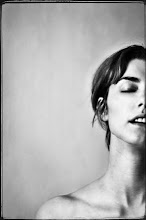
I read this book because I am interested in mixed media techniques and have played some with wax and wanted to learn more. This book covers some basic techniques and ideas for working with beeswax as an artistic medium. I wouldn't suggest this book for someone who is seriously interested in learning the traditional techniques of encaustic painting. In terms of how to paint with encaustic, the information was limited. But if you are a mixed media artists or are always looking for new techniques this is a fabulous resource to have in your library.
Patricia takes a very alternative approach using beeswax as a form of art. This book explores carving the wax, adding watercolor, transferring images, adding found objects, cloth and papers, and even burning shellac on the wax. She even has a chapter at the end with tips, examples, and ideas for how to present or frame your encaustic work.
The step by step images for all her technique examples seemed clear and easy to follow. However, I didn't care much for the examples of the finished art that were given throughout the book. Most of them I found to be uninspiring and as far as I could tell there was no real concept to any of her work, which was a disappointment. She made only a few references to concept throughout the whole book!
She did have some interesting techniques that sparked my interested, though. There was an example she showed where she bleached black paper. It looks like it has a lot of potential to create beautiful things. I am also interested in trying the shellac and watercolor techniques.
Here are the examples of these techniques. I photographed them from the book:



And now for my two cents about what I have observed from this book and in my own experience: I have found that when it comes to working with beeswax often times simpler (an image with a few accents and a couple layers of wax) is better...unless you want to go for a more abstract look. When I am trying to use photographs as the main focus and I am adding sand and twigs and paint and text and so on, it just never seems to come out correctly. It usually comes out looking cluttered or disorganized or scrapbooky. I think working with encaustic has a delicate balance between being a cohesive, strong piece of art and being a mess, boring, or having disconnected elements.
But, like I briefly mentioned before, when it comes to abstract work there is a lot of potential. There are many great textures and colors possible through the layering techniques of wax. In general I have found that I like the beauty and mood of abstract work with mixed media encaustic more then something that has a recognizable subject matter. An abstract approach with encaustic can create some very beautiful, visually interesting art.
On a final note, an important tip I discovered: when using photographs make sure the background surface is white, not wood/dark colored because it will darken your natural image a lot as your image becomes partly transparent from the wax.

Thanks, Rebecca for this very informative review! I have a question: Since you "wouldn't suggest this book for someone who is seriously interested in learning the traditional techniques of encaustic painting", what book or books would you recommend for that? Are there any out there?
ReplyDeleteI have not read any other books myself about encaustic painting. But I checked on Amazon and found two books that look like they cover a more traditional painting approach. However the reviews didn't look that great. If you want to search inside the book or read reviews you can look them up on amazon and see what you think: "The Encaustic Art Project Book" and "Encaustic Art: How to Paint with Wax" both by Micheal Bossom.
ReplyDeleteIf you are interested in encaustic painting, it might be helpful to get a basic book on encaustic so you can understand the foundational techniques and process. Then there are a lot of great tutorials I have watched on Youtube where you see more in depth techniques in practice. The videos can be very interesting and informative. There are also workshops that are taught on encaustic that you could look into.
Also, the book I read, "Encaustic Workshop," gave some great resources at the back of the book for both supplies and workshops:
ReplyDeletehttp://www.rfpaints.com
http://www.danielsmith.com
http://www.fineartstore.com/
These stores are a great place to buy ready made encaustic paints, tin cans to store them in, hake brushes and clayboards (which are excellent to use as your substrate).
http://www.international-encaustic-artists.org
is a great website for information and getting in touch with other artists.
hopefully these are helpful resources :)
The best and most comprehensive book on encaustics---in fact---the bible for true encaustic artists is Joanne Mattera's The Art of Encaustic Painting. It's been around for a number of years and is clear and professionally written. She has also created and organized a national encaustic conference the last few years which is an exciting conference to go to if you are really into encaustics.
ReplyDeleteThanks for the tip Susan. Do you do encaustic painting?
ReplyDelete